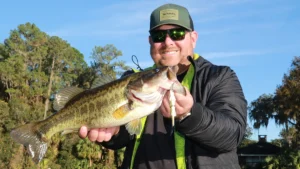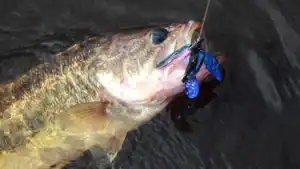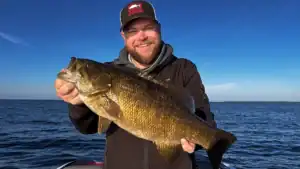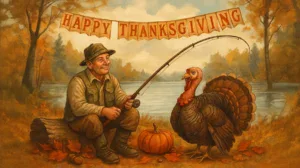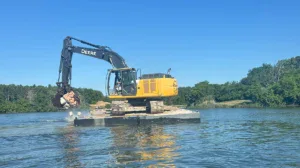My in-laws live on a small lake and this past Sunday, while my wife and I were visiting, I noticed the water was very low. Most of the laydowns were out of the water and all of the bank grass was high and dry on the shoreline. This got me thinking about how tough a drought, or a fall drawdown, can make bass fishing. When water levels are super low and everything is out of the water, where in the world are you supposed to start?
In short, I strongly suggest targeting what I call “secondary cover”. Essentially, this is the cover you can’t always see that sits off the bank. Whether it’s a hidden stump row, a shallower brush pile or a small underwater island, these areas can help you get on a strong pattern while most other anglers struggle.
Here’s what I’ve learned about this approach over the years.

It’s rarely fished
If you fish public water, it’s important to take fishing pressure into account, especially this time of year. The fish have been targeted all summer long and because most anglers gravitate to shoreline cover when they fish, the shallow bass have seen just about everything we have to offer. As I’ve always said, big bass don’t get big by being dumb. They can become conditioned to commonly used lures.
Instead of fixating on the shoreline stuff, consider looking for cover off of the bank. It’s barely messed with by anglers and bass feel safer and and more secure in these areas. I’d suggest taking an afternoon to simply look for secondary cover. Put that trolling motor on high and work parallel to the bank in 6 to 8 feet of water. When you run across something, immediately make a waypoint. By the end of the day, you’ll likely have dozens of areas high-percentage areas marked and ready to fish.
If you don’t have good electronics, don’t worry. I’ve also found some of my most productive secondary cover with a good pair of polarized sunglasses. Essentially, if you see a dark spot in the water, make a mental note to come back later and fish it. It doesn’t matter what it is, either, so don’t get too carried away with it. It can be a stump, rock, old Christmas tree, a branch-anything irregular that will hold a fish. This old-school approach can produce some of your best spots.

Great when the water level is low
When water levels fluctuate, bass positioning changes. If you can picture it in your head, bass tend to move with the water level. When the water level rises, the bass go shallower. Conversely, when it drops, the bass pull off the bank and can become fairly tough to catch. They get in those weird “in-between” places, but that’s where secondary cover becomes so important.
This cover concentrates transitioning bass, making it easier for anglers to pinpoint their location. Instead of just randomly suspending off of a depth change and becoming nearly impossible to target, secondary cover draws fish to a particular area.
If you’re dealing with low water levels, you’re putting yourself at a significant disadvantage if you don’t make a concerted effort to find secondary cover. I see it all the time on my home lake. It’s a power generation lake that’s very popular for tournaments, but out-of-towners get their teeth kicked in more often than not. They’ll practice all week when the water level is normal and catch a bunch of nice bass right on the bank. However, when power demand increases on the weekends and they drop the water Friday night, those same guys will have problems even getting a bite. They’ll bad-mouth the lake, but it’s not the lake’s fault. They just don’t know where that secondary cover is located.

It can stick out like a sore thumb
Believe it or not, targeting secondary cover can be quite strange at first. Constantly casting at the bank can be a tough habit to break-I’ve been there. But I don’t want to make this sound too complicated. You can find some of the best secondary areas on the lake before you even leave your house by using Google Earth. And you’ll be surprised how easy they are to find.
When I’m using Google Earth to find these areas, I’m looking for depth changes (light-colored water transitioning to dark-colored water), shoals with hard cover, underwater islands and isolated stumps. A lot of these things would take a long time to find by simply fishing or graphing, but getting a bird’s eye view of your local lake can take a lot of the guess work out of finding secondary cover. If you’ve never looked at satellite imagery of your favorite lake, you’ll be shocked by how much good-looking stuff you’ve probably fished right over.
Before you get frustrated by tough fishing, I just wanted to put this quick article out there to help you find some fish quickly. Secondary cover isn’t the golden answer to every difficult situation, but I promise it can make a significant difference this time of year. Try it out and let us know how you do!


